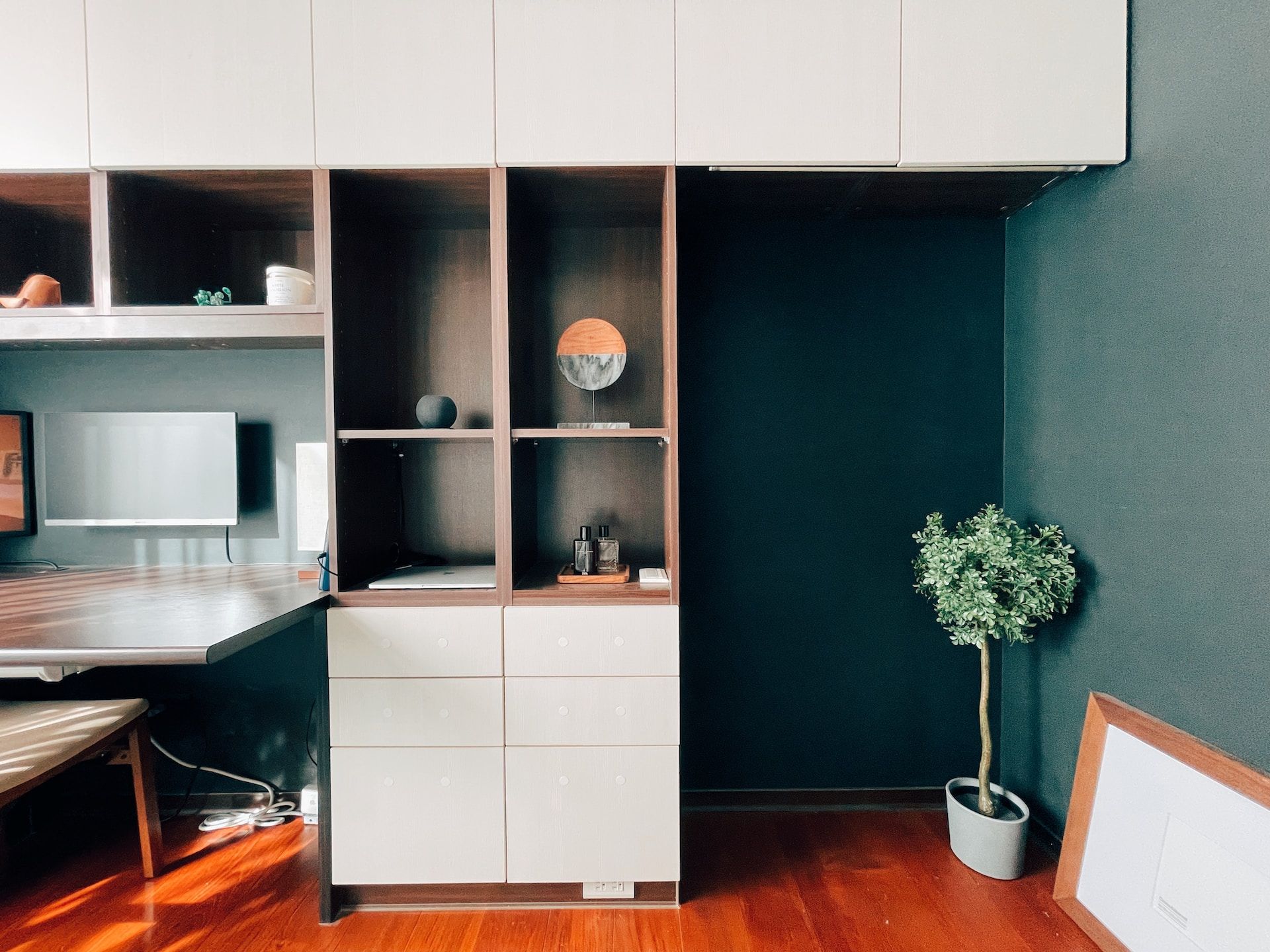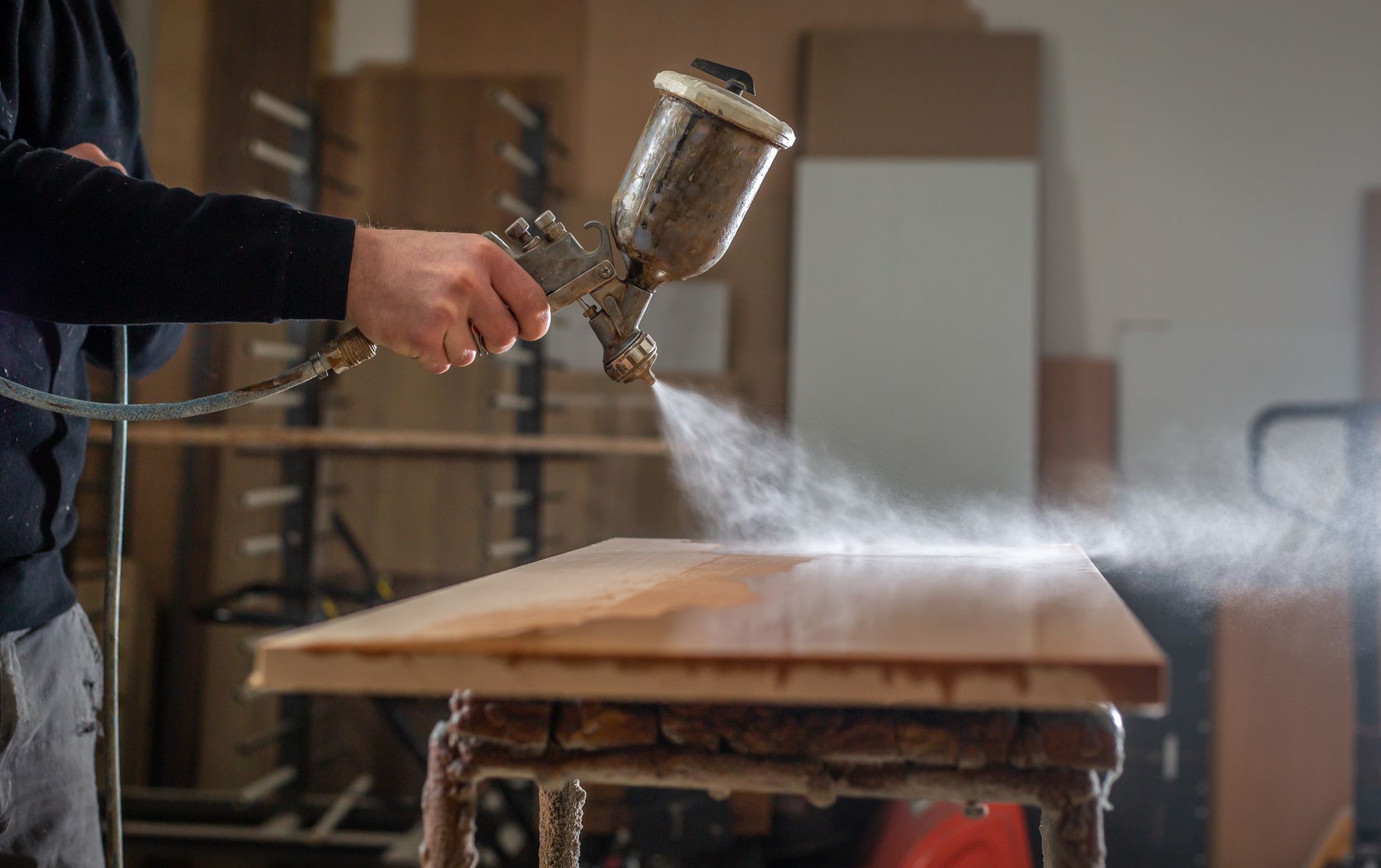The adoption of Industry 4.0 technologies, such as automation and robotics, can reduce furniture manufacturing costs by up to 25%. (Source: Allied Market Research)
According to a report by MarketsandMarkets, the use of sustainable materials and eco-friendly manufacturing practices can reduce furniture manufacturing costs by up to 15%. (Source: MarketsandMarkets)
A study by the National Institute of Standards and Technology (NIST) found that implementing lean manufacturing practices can reduce furniture manufacturing costs by up to 30%. (Source: NIST)

The use of additive manufacturing, also known as 3D printing, can reduce furniture manufacturing costs by up to 90% compared to traditional manufacturing methods. (Source: Furniture Today), while a study by the International Journal of Engineering Research & Technology found that using CNC machines can reduce furniture manufacturing costs by up to 40%. (Source: International Journal of Engineering Research & Technology)
Thus, as highlighted by these statistics, you can implement several strategies to reduce the cost of furniture manufacturing.
Reducing the cost of furniture manufacturing has become an increasingly important goal for furniture manufacturers in recent years.
With rising competition, increasing customer demand for affordable yet high-quality products, and growing pressure to adopt sustainable and eco-friendly manufacturing practices, furniture manufacturers are constantly seeking ways to reduce costs and improve efficiency.
Reducing the cost of furniture manufacturing is essential for manufacturers to remain competitive in the market, maintain profitability, and contribute to a more sustainable and environmentally friendly future.
This article will be your complete guide to reducing the cost of furniture manufacturing by covering the following topics:
- What is Furniture Manufacturing?
- What is Leading to the Rising Costs of Furniture Manufacturing?
- Strategies to Reduce the Cost of Furniture Manufacturing
- What is the Importance of Reducing the Cost of Furniture Manufacturing?
- How can Furniture Manufacturers Improve their Quality While Reducing Costs?
- How will the Implementation of MRP Systems Help in Reducing the Cost of Furniture Manufacturing?
- FAQs related to Reducing the Cost of Furniture Manufacturing
- How can Deskera Help You with Furniture Manufacturing?
- Key Takeaways
- Related Articles
What is Furniture Manufacturing?
Furniture manufacturing is the process of designing, creating, and producing furniture pieces for use in residential, commercial, and institutional settings. It involves several stages, including conceptualizing and designing the furniture, selecting materials, sourcing and cutting materials, assembling components, and finishing and packaging the final product.
Furniture manufacturing typically involves the use of specialized tools and equipment, such as saws, routers, drills, sanders, and finishing machines. The manufacturing process may be automated, or it may involve a high degree of hand craftsmanship, depending on the type of furniture being produced.
Furniture manufacturing encompasses a wide range of products, including chairs, tables, sofas, cabinets, beds, and many others. The furniture can be made from a variety of materials, such as wood, metal, plastic, glass, and fabric, and can be produced in a variety of styles, from traditional to modern and everything in between.
Overall, furniture manufacturing is a complex process that requires a combination of design skills, technical expertise, and specialized equipment to create high-quality, durable furniture products that meet the needs of consumers.
What is Leading to the Rising Costs of Furniture Manufacturing?
There are several factors that are contributing to the rising costs of furniture manufacturing. Here are some of the most significant ones:
- Raw Material Costs: The cost of raw materials used in furniture manufacturing has been increasing steadily over the past few years. Wood, for example, is a key material in furniture production, and the cost of lumber has increased due to factors such as wildfires, insect infestations, and trade disputes. Similarly, the price of steel, which is used in furniture frames, has also gone up due to supply chain disruptions and trade tensions.
- Labor Costs: The cost of labor is another significant factor contributing to the rising costs of furniture manufacturing. In many countries, including the United States and China, the cost of labor has been increasing as a result of minimum wage increases and a tightening labor market. Additionally, furniture manufacturing often requires skilled labor, which can be expensive to hire and retain.
- Transportation Costs: Shipping and transportation costs have also been on the rise, as global demand for shipping has increased and supply chain disruptions have occurred due to the COVID-19 pandemic. This has led to increased transportation costs, which are often passed on to consumers in the form of higher prices.
- Regulatory Compliance Costs: There are also regulatory compliance costs associated with furniture manufacturing, such as environmental and safety regulations. Compliance with these regulations can be costly, as manufacturers must invest in equipment, training, and other measures to ensure that their products meet regulatory standards.
- Technology Costs: Lastly, as technology advances, furniture manufacturers must invest in new equipment and software to remain competitive. This can be costly, particularly for small and medium-sized manufacturers who may not have the financial resources to make significant investments in technology.
- Energy Costs: The cost of energy required for furniture manufacturing, including electricity, gas, and oil, has also been increasing due to factors such as geopolitical tensions and environmental regulations.
- Marketing and Advertising Costs: To remain competitive in a crowded marketplace, furniture manufacturers must invest in marketing and advertising campaigns, which can be expensive.
- Supply Chain Disruptions: The COVID-19 pandemic and other global events have caused significant disruptions in the furniture supply chain, leading to increased costs for raw materials, transportation, and labor.
In conclusion, the rising costs of furniture manufacturing are driven by a combination of factors, including raw material costs, labor costs, transportation costs, regulatory compliance costs, and technology costs.
These factors are likely to continue to drive up furniture prices in the coming years, and manufacturers will need to find ways to reduce manufacturing costs or increase efficiency to remain competitive.
Strategies to Reduce the Cost of Furniture Manufacturing
Reducing the cost of furniture manufacturing can be a challenging task, but here are some strategies that can help:
Optimize Production Processes
Optimizing production processes can be an effective strategy to reduce the cost of furniture manufacturing in several ways.
Firstly, by analyzing and streamlining the production process, manufacturers can identify and eliminate inefficiencies, bottlenecks, and unnecessary steps. This can result in a reduction in the time required to complete a manufacturing process, which can lead to higher production capacity, lower labor costs, and higher net profit ratio.
Secondly, optimizing production processes can help reduce waste. Manufacturers can identify waste in the form of unused raw materials, unnecessary energy consumption, and time-consuming processes. By reducing waste, manufacturers can lower their operating costs and improve the sustainability of their operations.
Thirdly, optimizing production processes can improve quality control. By standardizing processes and identifying potential quality issues, manufacturers can reduce the need for repairs or replacements, leading to a reduction in costs and an increase in customer satisfaction, and therefore customer loyalty.
Finally, by optimizing production processes, manufacturers can improve their supply chain management. By having a more efficient production process, manufacturers can better manage their inventory and reduce the risk of stock shortages or overproduction.
Here are some ways that furniture manufacturers can optimize their production processes:
- Value Stream Mapping: Value Stream Mapping is a lean manufacturing technique used to identify waste and inefficiencies in the production process. This involves analyzing each step in the process, from raw materials to finished product, to identify areas where time, money, or resources are being wasted. By eliminating or reducing these wastes, production processes can be streamlined, and costs can be reduced.
- Lean Manufacturing: Lean manufacturing is a philosophy that emphasizes continuous improvement and waste reduction. This involves identifying and eliminating non-value-added activities in the production process, such as overproduction, waiting, excess inventory, defects, over-processing, and unnecessary motion. By reducing waste, lean manufacturing can improve efficiency and reduce costs.
- Kaizen: Kaizen is a Japanese term for continuous improvement. This involves making small, incremental improvements to the production process on a regular basis. By continuously improving the process, production can become more efficient, and costs can be reduced over time.
- Automation: As mentioned earlier, automation and technology can be used to improve the production process. This can include using robots for repetitive tasks, using computer-controlled machines to improve precision and speed, and using software to optimize scheduling and inventory management.
- Employee Training: Providing employees with training and resources to improve their skills and knowledge can help to improve the production process. This can include training on new equipment or software, providing safety training to reduce accidents and injuries, and providing ongoing professional development opportunities.
Overall, optimizing production processes can help furniture manufacturers to improve efficiency, reduce waste, and reduce costs. It can also improve quality and lead times, which can help to enhance customer satisfaction and loyalty.
Use High-Quality Materials
Using high-quality materials may not necessarily reduce the cost of furniture manufacturing in the short term, but it can be a good long-term strategy for several reasons:
- Durability: High-quality materials, such as solid wood or high-density foam, are more durable and can last longer than cheaper alternatives. This means that the furniture will need to be replaced less frequently, which can save money in the long run.
- Customer Satisfaction: High-quality materials are often associated with better craftsmanship and more comfortable designs, which can lead to greater customer satisfaction and repeat business.
- Reduced Maintenance Costs: High-quality materials may require less maintenance and repairs over time, which can save money on upkeep and replacement costs.
- Brand Image: Using high-quality materials can also help to build a brand image of quality and luxury, which can attract customers who are willing to pay a premium for premium products.
However, it's important to note that using high-quality materials can increase the upfront cost of manufacturing, which may need to be passed on to the customer in the form of higher prices. As a result, it's important to strike a balance between using high-quality materials and keeping costs reasonable.
Negotiate Better Prices with the Suppliers
Negotiating better prices with suppliers can be an effective strategy for reducing the cost of furniture manufacturing. Here are some tips on how to negotiate better prices:
- Research: Before negotiating, do your research to determine the fair market value of the materials or services you're looking to purchase. This will give you a benchmark to work with and help you identify areas where you can negotiate.
- Build Relationships: Establishing strong relationships with suppliers can help you negotiate better prices. Consider offering to purchase larger quantities or committing to longer-term contracts in exchange for better pricing.
- Understand Your Suppliers' Cost Structure: Understanding your suppliers' cost structure can help you identify areas where you may be able to negotiate. For example, if a supplier is experiencing excess inventory or production capacity, they may be willing to offer discounts to move their inventory.
- Be Flexible: Be open to alternative solutions, such as using different materials or adjusting delivery schedules, to achieve cost savings.
- Be Prepared to Walk Away: While you should always strive for a win-win outcome, it's important to be prepared to walk away from negotiations if the terms are not favorable. This can help you maintain leverage and negotiate more effectively in the future.
Overall, negotiating better prices with suppliers can be an effective way to reduce the cost of furniture manufacturing, but it requires preparation, relationship building, and flexibility.
Implement Lean Manufacturing Principles
Implementing lean manufacturing principles can be an effective strategy for reducing the cost of furniture manufacturing. Here are some ways that lean principles can be applied to furniture manufacturing:
- Reduce Waste: Lean manufacturing aims to minimize waste in all forms, including excess inventory, overproduction, and defects. By identifying and reducing waste, furniture manufacturers can streamline their operations and reduce costs.
- Continuous Improvement: Lean manufacturing emphasizes the need for continuous improvement through the elimination of non-value-added activities. By continually seeking to improve processes, furniture manufacturers can increase efficiency and reduce costs over time.
- Standardization: Standardizing processes, such as assembly or finishing, can help to reduce variability and increase efficiency. This can lead to cost savings by reducing the time and materials required for each unit of furniture.
- Pull Production: Lean manufacturing favors a pull production system, in which furniture is produced in response to customer demand, rather than a push production system, in which furniture is produced in anticipation of demand. This can reduce inventory levels and the associated costs of storage and handling.
- Cross-Training: Cross-training employees to perform multiple tasks can help to increase flexibility and reduce downtime. This can help to reduce costs by maximizing the utilization of labor resources.
Overall, implementing lean manufacturing principles can help furniture manufacturers to streamline their operations, reduce waste, and increase efficiency, leading to cost savings over time.
Use Automation and Technology
Using automation and technology can be an effective strategy for reducing the cost of furniture manufacturing. Here are some ways that automation and technology can be applied to furniture manufacturing:
- CNC Machines: Computer Numerical Control (CNC) machines can be used to automate the cutting, drilling, and shaping of furniture components. This can improve precision and speed up production, leading to cost savings.
- Robotics: Robots can be used for tasks such as welding, painting, and assembly. By automating these tasks, furniture manufacturers can reduce labor costs and improve quality.
- 3D Printing: 3D printing technology can be used to create prototypes, molds, and even finished products. This can reduce the time and costs associated with traditional manufacturing methods.
- IoT Sensors: Internet of Things (IoT) sensors can be used to monitor equipment, track inventory, and optimize production processes. By providing real-time data, furniture manufacturers can identify areas for improvement and increase efficiency.
- CAD/CAM Software: Computer-Aided Design (CAD) and Computer-Aided Manufacturing (CAM) software can be used to design furniture and automate the production process. This can reduce errors and improve productivity.
Overall, automation and technology can help furniture manufacturers to reduce labor costs, increase efficiency, and improve quality, leading to cost savings over time. However, it's important to carefully evaluate the costs and benefits of any technology investment to ensure that it aligns with the overall business strategy.
Outsourcing Non-Core Activities
Outsourcing non-core activities can be an effective strategy for reducing the cost of furniture manufacturing. Here are some examples of non-core activities that can be outsourced:
- Logistics: Outsourcing transportation and logistics can help furniture manufacturers to reduce costs associated with shipping, handling, and warehousing. Third-party logistics providers can leverage their economies of scale and expertise to negotiate better rates and streamline the supply chain.
- Accounting and Finance: Outsourcing accounting and finance functions can help furniture manufacturers to reduce costs associated with hiring and training full-time employees. Additionally, outsourcing these functions can provide access to specialized expertise and technology.
- Marketing and Sales: Outsourcing marketing and sales functions can help furniture manufacturers to reduce costs associated with hiring and training full-time employees. Additionally, outsourcing these functions can provide access to specialized expertise and technology.
- IT Services: Outsourcing IT services can help furniture manufacturers to reduce costs associated with hardware, software, and personnel. Third-party IT providers can leverage their expertise and economies of scale to provide cost-effective solutions.
- Human Resources: Outsourcing human resources functions can help furniture manufacturers to reduce costs associated with recruiting, hiring, and training full-time employees. Additionally, outsourcing these functions can provide access to specialized expertise and technology.
Overall, outsourcing non-core activities can help furniture manufacturers to focus on their core competencies, reduce costs, and improve efficiency.
However, it's important to carefully evaluate potential outsourcing partners to ensure that they can provide the necessary expertise, quality, and cost savings.
Additionally, outsourcing should be balanced with maintaining sufficient control over critical aspects of the business.
Reduce Energy Consumption
Reducing energy consumption can be an effective strategy for reducing the cost of furniture manufacturing. Here are some ways that furniture manufacturers can reduce energy consumption:
- Efficient Lighting: Switching to energy-efficient lightings, such as LED bulbs, can reduce energy consumption and save on electricity bills.
- Equipment Upgrades: Upgrading equipment to more energy-efficient models can help to reduce energy consumption. For example, replacing outdated machinery with newer, more efficient models can reduce electricity usage.
- Heating and Cooling: Properly insulating facilities, using programmable thermostats, and maintaining HVAC equipment can help to reduce energy consumption and save on heating and cooling costs.
- Renewable Energy: Using renewable energy sources, such as solar panels or wind turbines, can help to reduce energy consumption and save on electricity bills.
- Process Improvements: Streamlining production processes and reducing waste can help to reduce energy consumption and improve efficiency. For example, optimizing production schedules and minimizing the number of setups can reduce energy consumption.
Overall, reducing energy consumption can help furniture manufacturers to reduce costs and improve sustainability. Additionally, it can help to reduce the company's carbon footprint, which can be an important consideration for environmentally conscious consumers.
Use of Sustainable Materials and Eco-Friendly Manufacturing Practices
The use of sustainable materials and eco-friendly manufacturing practices has emerged as a popular strategy to reduce the cost of furniture manufacturing in recent years.
Sustainable materials such as bamboo, reclaimed wood, and recycled plastic are being used more frequently in furniture manufacturing as they are often cheaper and more environmentally friendly than traditional materials.
In addition, eco-friendly manufacturing practices such as reducing waste, using renewable energy sources, and implementing efficient production processes can help to reduce costs and improve efficiency.
For example, implementing closed-loop manufacturing processes, where waste is recycled back into the production process, can help to reduce material costs and minimize waste disposal.
Moreover, consumer demand for environmentally sustainable products has increased in recent years, making the use of sustainable materials and eco-friendly manufacturing practices not only an effective cost-reduction strategy but also a way to appeal to eco-conscious consumers.
By using sustainable materials and eco-friendly manufacturing practices, furniture manufacturers can differentiate themselves from competitors and attract consumers who prioritize environmental sustainability.
Overall, the use of sustainable materials and eco-friendly manufacturing practices can reduce costs, improve efficiency, and appeal to environmentally conscious consumers, making it a valuable strategy for furniture manufacturers looking to remain competitive in the market.
Implementing Circular Economy Principles
Implementing circular economy principles can be a highly effective strategy for reducing the cost of furniture manufacturing. Circular economy principles aim to minimize waste and maximize resource efficiency by designing products that can be recycled or reused at the end of their useful life.
In the context of furniture manufacturing, this can involve using materials that are easy to recycle or repurpose, such as wood, metal, and plastic.
By implementing circular economy principles, furniture manufacturers can reduce material costs by reusing waste and recycled materials instead of relying on virgin materials.
This can also help to reduce the environmental impact of furniture manufacturing by minimizing the need for resource extraction and reducing greenhouse gas emissions.
Furthermore, implementing circular economy principles can help furniture manufacturers to establish a more sustainable business model, where the focus is on keeping products in use for as long as possible rather than on generating new sales.
This can help to build brand loyalty among consumers who are increasingly concerned about sustainability and can ultimately lead to long-term cost savings by reducing the need for new product development and marketing.
In addition, implementing circular economy principles can help furniture manufacturers to comply with environmental regulations and avoid potential penalties for non-compliance.
By adopting sustainable practices and reducing their environmental impact, furniture manufacturers can also enhance their reputation and appeal to consumers who prioritize sustainability. This will also lead to improved customer retention, while also encouraging returning customers.
Overall, implementing circular economy principles can help furniture manufacturers to reduce costs, improve efficiency, comply with environmental regulations, and appeal to environmentally conscious consumers.
By embracing circular economy principles, furniture manufacturers can build a more sustainable and profitable business model while also contributing to a more sustainable future.
Use of Predictive Analytics and Machine Learning
The use of predictive analytics and machine learning has emerged as a powerful strategy for reducing the cost of furniture manufacturing. Predictive analytics and machine learning technologies can help furniture manufacturers to optimize their production processes, minimize waste, and reduce operational costs.
For example, predictive analytics can be used to forecast demand for different types of furniture, allowing manufacturers to adjust their production schedules and inventory levels accordingly. This can help to reduce the risk of overproduction, which can result in excess inventory and increased storage costs.
Machine learning algorithms can also be used to optimize production processes by identifying inefficiencies and recommending process improvements. By analyzing large datasets of production and quality control data, machine learning algorithms can identify patterns and anomalies that may not be visible to human analysts. This can help manufacturers to identify the root causes of production issues and implement targeted process improvements to reduce waste and improve quality.
Furthermore, machine learning can be used to optimize supply chain management by analyzing data on supplier performance, lead times, and inventory levels. This can help manufacturers to identify the most reliable and cost-effective suppliers and minimize the risk of supply chain disruptions.
Overall, the use of predictive analytics and machine learning can help furniture manufacturers to reduce costs, improve efficiency, and enhance the overall quality of their products. By leveraging these technologies, furniture manufacturers can gain a competitive advantage in the market and position themselves for long-term success.
Use of Virtual and Augmented Reality
The use of virtual and augmented reality (VR/AR) has emerged as a promising strategy for reducing the cost of furniture manufacturing. VR/AR technologies can be used to simulate furniture designs, test product prototypes, and visualize different manufacturing processes, reducing the need for physical prototypes and costly testing.
For example, virtual reality can be used to create 3D models of furniture designs, allowing designers and manufacturers to visualize and test different design iterations in a virtual environment. This can help to reduce the need for physical prototypes, which can be time-consuming and expensive to produce.
AR technologies can also be used to visualize furniture designs in a real-world environment, allowing customers to see how different furniture pieces would look in their homes before making a purchase. This can help to reduce the risk of returns and improve customer satisfaction, ultimately leading to long-term cost savings for furniture manufacturers.
Moreover, VR/AR technologies can be used to simulate different manufacturing processes, allowing manufacturers to identify potential production issues and implement process improvements before any physical production takes place. This can help to reduce waste and improve efficiency, ultimately leading to lower production costs.
Furthermore, VR/AR technologies can be used to train workers on new production processes and equipment, reducing the need for expensive in-person training sessions and minimizing the risk of errors and accidents on the production floor.
Overall, the use of virtual and augmented reality can help furniture manufacturers to reduce costs, improve efficiency, and enhance the overall quality of their products. By leveraging these technologies, furniture manufacturers can gain a competitive advantage in the market and position themselves for long-term success.
What is the Importance of Reducing the Cost of Furniture Manufacturing?
Reducing the cost of furniture manufacturing is important for several reasons:
- Improved Profitability: By reducing costs, furniture manufacturers can improve their profitability. This can allow them to reinvest in the business, expand their product lines, or pass on cost savings to customers, which can improve competitiveness.
- Enhanced Competitiveness: By reducing costs, furniture manufacturers can price their products more competitively. This can help them to win new business, retain existing customers, and increase market share.
- Increased Sustainability: By reducing costs, furniture manufacturers can reduce their environmental impact. This can include reducing energy consumption, minimizing waste, and using more sustainable materials.
- Improved Quality: By reducing costs, furniture manufacturers can invest in quality improvements. This can include improving materials, investing in better equipment, or hiring more skilled employees. This can improve the overall quality of the products and enhance customer satisfaction.
- Enhanced Flexibility: By reducing costs, furniture manufacturers can become more flexible. This can include investing in new equipment, hiring more employees, or expanding their product lines. This can help them to respond more quickly to changing market conditions or customer needs.
Overall, reducing the cost of furniture manufacturing is important for improving profitability, competitiveness, sustainability, quality, and flexibility.
By using a combination of strategies, such as optimizing production processes, using high-quality materials, and outsourcing non-core activities, furniture manufacturers can achieve these goals and position themselves for long-term success.
How can Furniture Manufacturers Improve their Quality while Reducing Costs?
Furniture manufacturers can improve their quality while reducing costs by implementing the following strategies:
- Source high-quality materials at lower prices: Look for suppliers who offer better-quality materials at lower prices. This will reduce the cost of production while improving the quality of the final product.
- Implement quality control measures: Ensure that quality control measures are implemented throughout the production process to detect and address quality issues before they become costly problems.
- Optimize production processes: Analyze production workflows and identify inefficiencies that increase production costs. Implement lean manufacturing principles to improve efficiency, reduce waste, and improve quality.
- Invest in employee training: Ensure that employees are trained on quality standards and processes. This will improve their skills and help to reduce errors and waste.
- Focus on design: Design products that are easy to manufacture, have fewer parts and use materials efficiently. This will help to reduce costs while improving quality.
- Use automation and technology: Automate tasks where possible, and use technology such as computer-aided design (CAD) and computer-aided manufacturing (CAM) to optimize production processes and reduce errors.
By implementing these strategies, furniture manufacturers can improve their quality while reducing costs, resulting in higher profitability and customer satisfaction.
How will the Implementation of MRP Systems Help in Reducing the Cost of Furniture Manufacturing?
The implementation of Material Requirements Planning (MRP) systems can help in reducing the cost of furniture manufacturing in several ways:
- Improved Inventory Management: MRP systems can help to optimize inventory levels by providing accurate information on materials usage, lead times, and demand. This can reduce the amount of inventory on hand, which can lower storage costs and reduce the risk of overstocking or stockouts.
- Better Production Planning: MRP systems can provide detailed production schedules that can help to optimize the use of resources, including labor and equipment. By scheduling production more efficiently, manufacturers can reduce idle time, minimize setup time, and improve overall efficiency, therefore leading to better production planning.
- Reduced Material Waste: MRP systems can help to minimize material waste by providing accurate information on the number of materials needed for each production run. This can help to reduce the amount of scrap or excess material that is generated during production.
- Improved Supplier Management: MRP systems can help to improve supplier management by providing accurate information on delivery times, lead times, and order quantities. This can help manufacturers to optimize their ordering and production schedules and reduce the risk of stockouts or excess inventory.
- Enhanced Cost Control: MRP systems can help to enhance cost control by providing accurate information on material costs, labor costs, and overhead costs. This can help manufacturers to identify areas where costs can be reduced and optimize their production processes accordingly.
Overall, the implementation of MRP systems can help furniture manufacturers to improve inventory management, production planning, material waste reduction, supplier management, and cost control. This can help to reduce costs, improve efficiency, and enhance profitability in the long run.
FAQs related to Reducing the Cost of Furniture Manufacturing
- What is the primary benefit of reducing the cost of furniture manufacturing?
The primary benefit of reducing the cost of furniture manufacturing is improved profitability for the business.
- How can furniture manufacturers reduce their material costs?
Furniture manufacturers can reduce their material costs by sourcing high-quality materials at lower prices, using recycled materials, or optimizing their inventory management.
- What is lean manufacturing, and how can it help to reduce costs?
Lean manufacturing is a system of production that focuses on minimizing waste and maximizing efficiency. It can help to reduce costs by identifying and eliminating non-value-added activities in the production process.
- Can outsourcing help furniture manufacturers to reduce costs?
Yes, outsourcing non-core activities, such as logistics or accounting, can help furniture manufacturers to reduce costs by focusing their resources on their core competencies.
- How can automation and technology be used to reduce furniture manufacturing costs?
Automation and technology can be used to improve efficiency, reduce labor costs, and minimize errors in the production process.
- How can furniture manufacturers reduce their energy consumption?
Furniture manufacturers can reduce their energy consumption by implementing energy-efficient practices and technologies, such as LED lighting or solar panels.
- What is value engineering, and how can it help to reduce costs?
Value engineering is a process that analyzes the function of a product and identifies ways to reduce its cost while maintaining its functionality.
- Can furniture manufacturers reduce their shipping and logistics costs?
Yes, furniture manufacturers can reduce their shipping and logistics costs by optimizing their transportation methods, improving their inventory management, and negotiating better rates with carriers.
- How can furniture manufacturers reduce their overhead costs?
Furniture manufacturers can reduce their overhead costs by implementing cost-saving measures such as energy efficiency improvements, streamlining administrative processes, and negotiating better rates with suppliers.
- Can implementing MRP systems help furniture manufacturers to reduce costs?
Yes, implementing Material Requirements Planning (MRP) systems can help furniture manufacturers to optimize inventory management, improve production planning, and reduce material waste.
- How can furniture manufacturers improve their quality while reducing costs?
Furniture manufacturers can improve their quality while reducing costs by using high-quality materials, implementing quality control measures, and optimizing their production processes.
- Can furniture manufacturers reduce their marketing and advertising costs?
Yes, furniture manufacturers can reduce their marketing and advertising costs by focusing on targeted marketing efforts, leveraging social media and online advertising, and optimizing their marketing spend.
- How can furniture manufacturers reduce the cost of warranty claims?
Furniture manufacturers can reduce the cost of warranty claims by improving product design, implementing quality control measures, and providing better customer service to address issues before they become warranty claims.
How can Deskera Help You with Furniture Manufacturing?
Deskera is a cloud-based software solution that offers a range of features to help streamline and optimize the furniture manufacturing process. Here are some ways Deskera MRP can help you with furniture manufacturing:
- Inventory management: Deskera can help you manage your inventory levels and track the movement of raw materials and finished goods in real time.
- Production planning: With Deskera, you can plan and schedule your production process, track progress, and monitor resource utilization to ensure efficient production.
- Quality control: Deskera offers tools to help you manage quality control throughout the manufacturing process, from design to finishing, to ensure that your products meet the required standards.
- Sales and distribution: Deskera can help you manage your sales orders, track customer orders, and manage your distribution channels, allowing you to manage your sales process more efficiently.
- Financial management: With Deskera, you can manage your financial transactions, track expenses, and generate financial reports, giving you greater visibility into your financial performance.
- Business intelligence: Deskera provides advanced analytics and reporting capabilities, allowing you to gain insights into your business performance and make data-driven decisions.
Key Takeaways
To summarize, reducing the cost of furniture manufacturing is a crucial goal for furniture manufacturers today as they seek to remain competitive, maintain profitability, and comply with environmental regulations. Some of the key takeaways from the strategies discussed above include:
- Optimize production processes
- Use high-quality materials
- Negotiate better prices with the suppliers
- Implement lean manufacturing principles
- Use automation and technology
- Outsourcing non-core activities
- Reduce energy consumption
- Use of sustainable materials and eco-friendly manufacturing practices
- Implementing circular economy principles
- Use of predictive analytics and machine learning
- Use of virtual and augmented reality
The importance of reducing the cost of furniture manufacturing is:
- Improved profitability
- Enhanced competitiveness
- Increased sustainability
- Improved quality
- Enhanced flexibility
Some of the ways in which furniture manufacturers can improve their quality while reducing costs are:
- Source high-quality materials at lower prices
- Implement quality control measures
- Optimize production processes
- Invest in employee training
- Focus on design
- Use automation and technology
Lastly, by using Deskera's comprehensive suite of software tools, furniture manufacturers can streamline their operations, improve efficiency, and reduce costs, resulting in better business performance and increased customer satisfaction.
Related Articles














